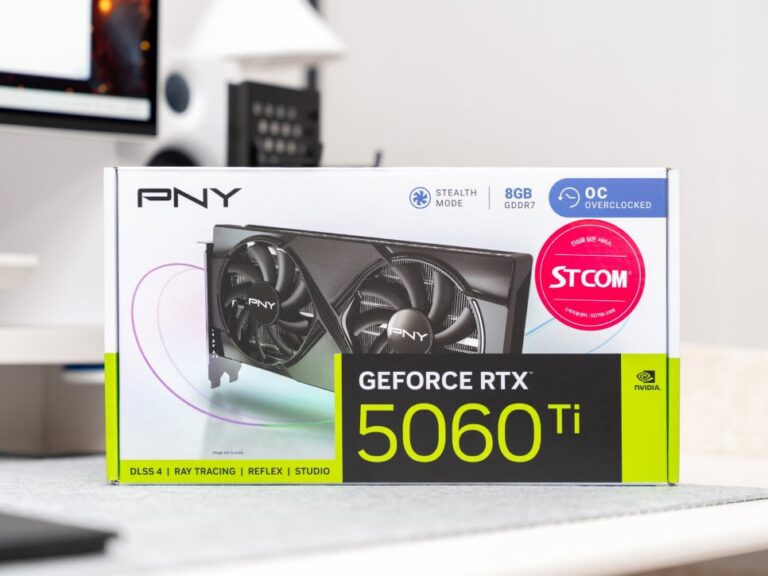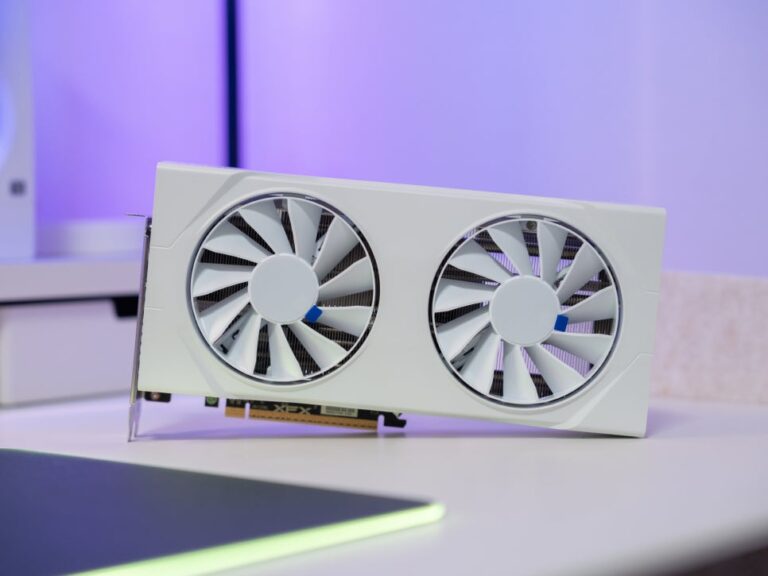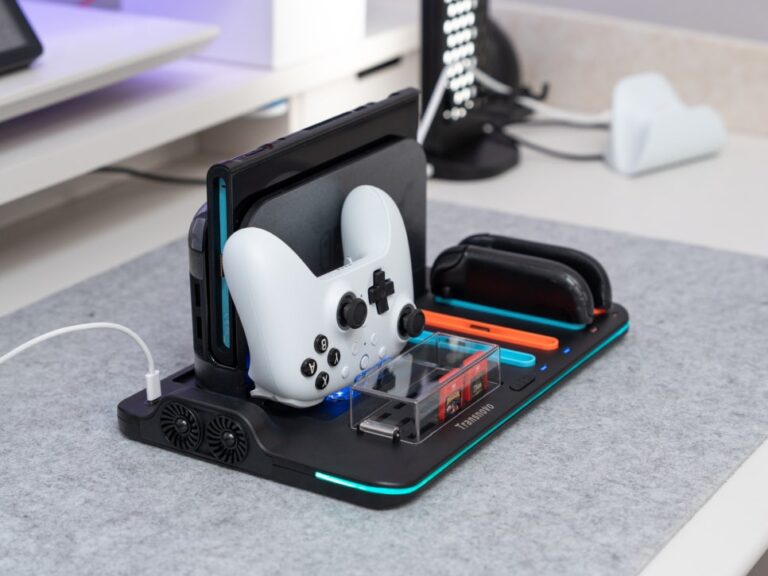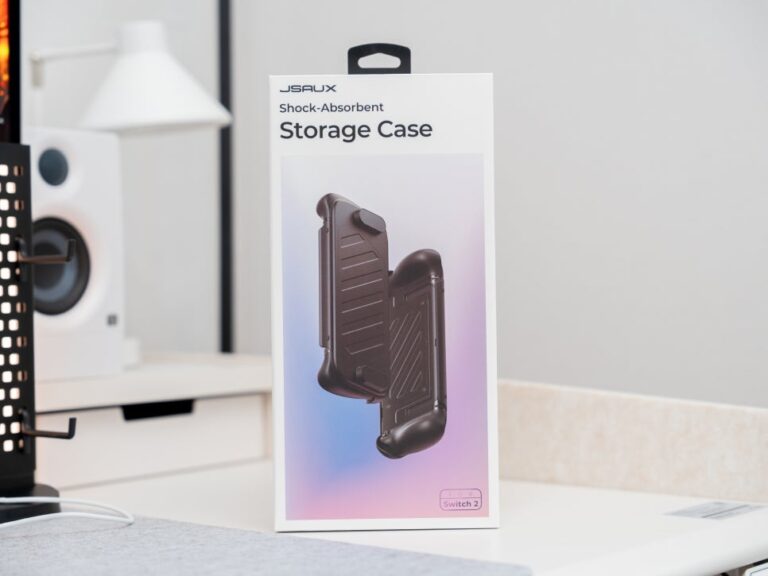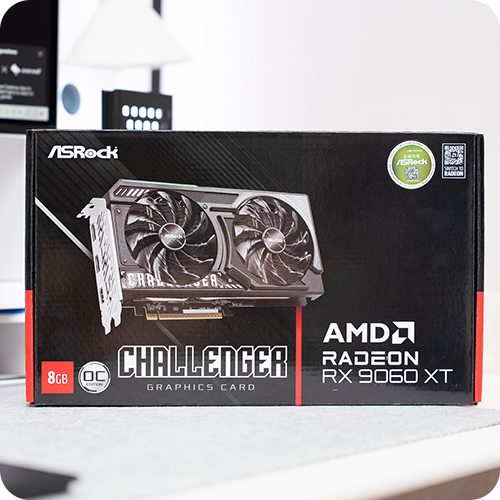
title.png
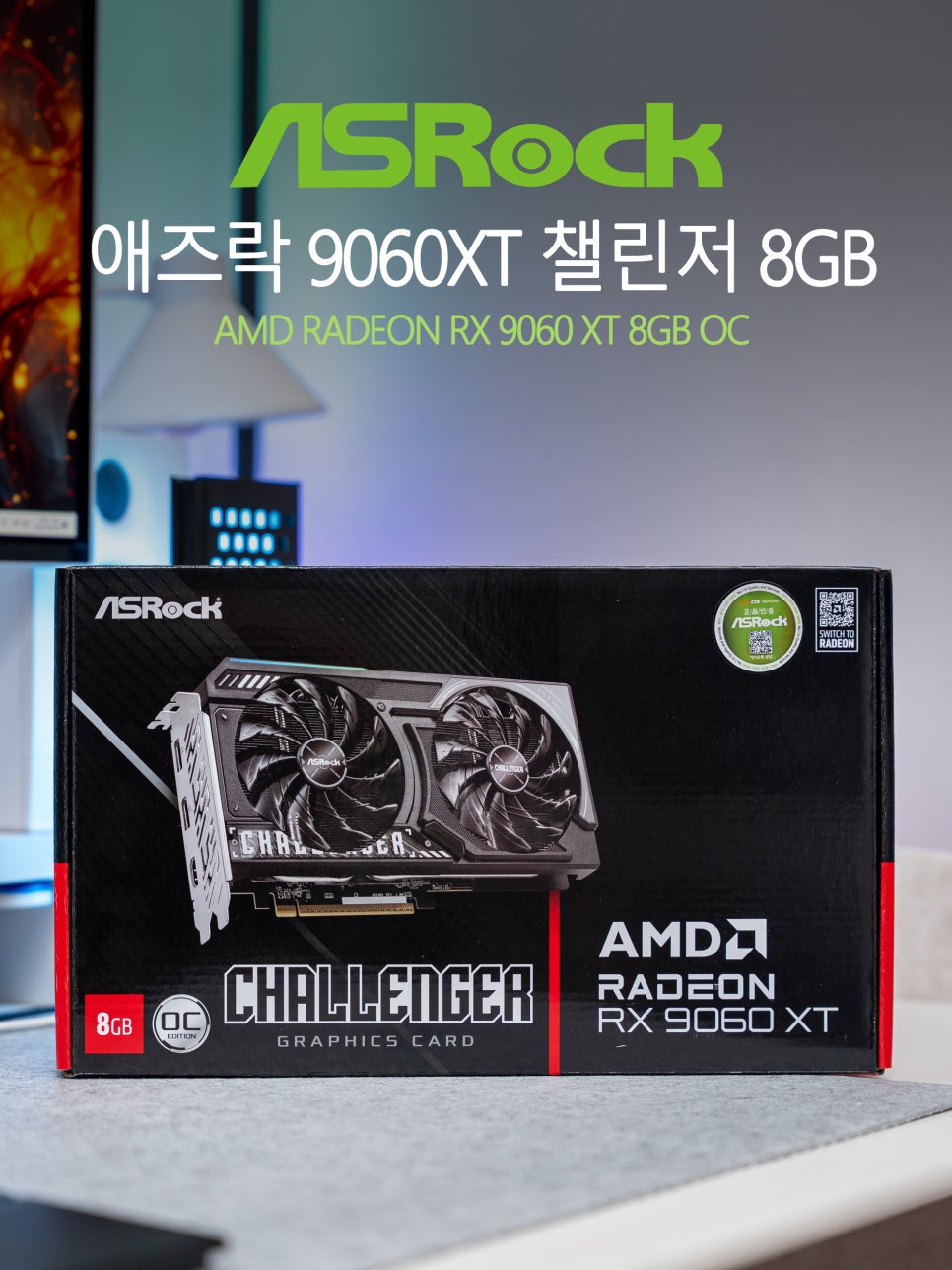
The mainstream graphics card market is heating up. Among AMD’s confidently released RDNA 4 architecture-based RX 9000 series, the RX 9060 XT, with its 8GB of GDDR6 memory and attractive price point in the mid-400,000 won range, is garnering significant attention from gamers.
With the recommended system requirements for recently released games steadily increasing, the RX 9060 XT stands out as a viable option for those seeking a graphics card capable of smooth FHD and QHD gaming at a reasonable price, even offering an entry point into 4K gaming through FSR. Today, we’ll take a closer look at the ASRock Radeon RX 9060 XT CHALLENGER OC D6 8GB DAEWON CTS model, examining its performance and features in detail.
Product Specifications and Components
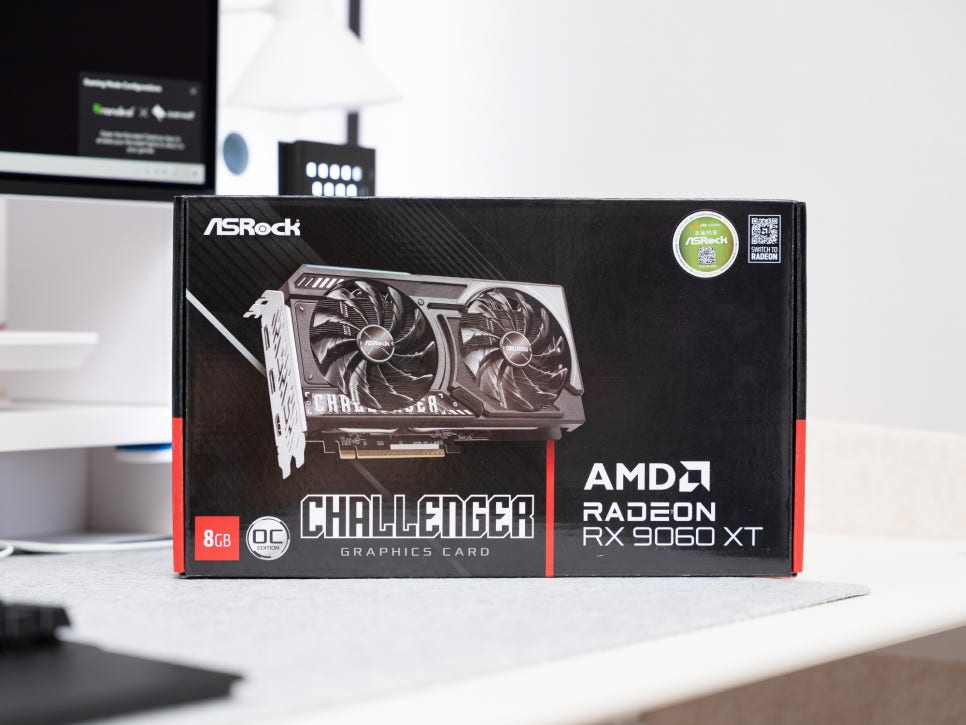
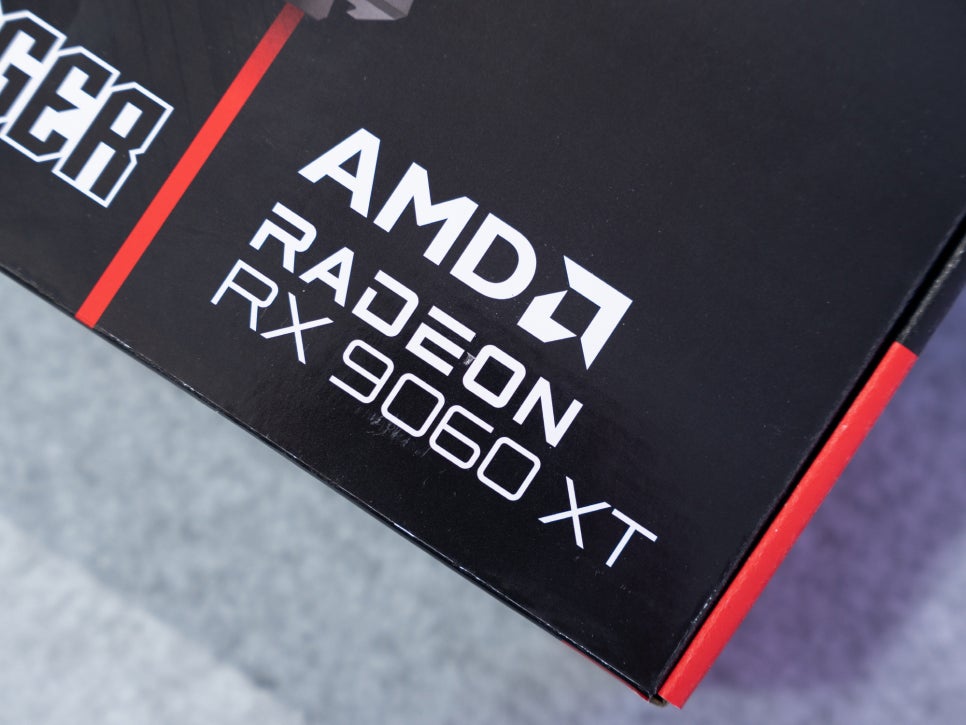
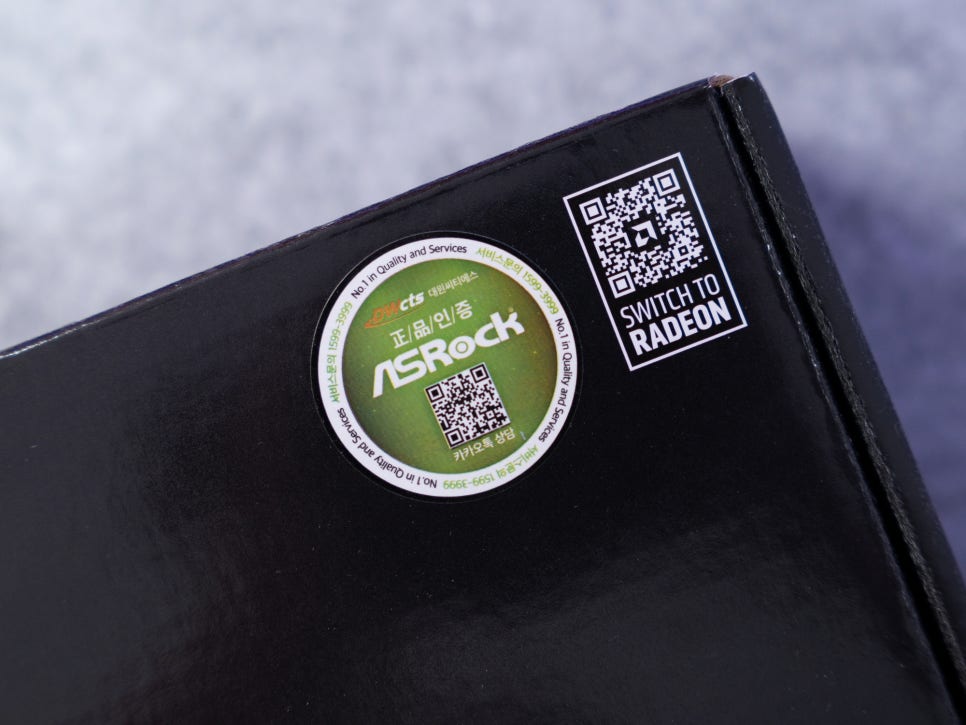
While ASRock built its reputation as a motherboard manufacturer, it entered the graphics card market in 2018 and has consistently released AMD Radeon series cards. Since 2020, they’ve offered the CHALLENGER lineup, a mid-range series focused on providing value for gamers. The ASRock Radeon RX 9060 XT CHALLENGER OC D6 8GB DAEWON CTS, the subject of today’s review, is a mainstream graphics card with a minimalist black design. Its compact form factor and twin-fan structure ensure broad compatibility, from SFF systems to full-tower cases.

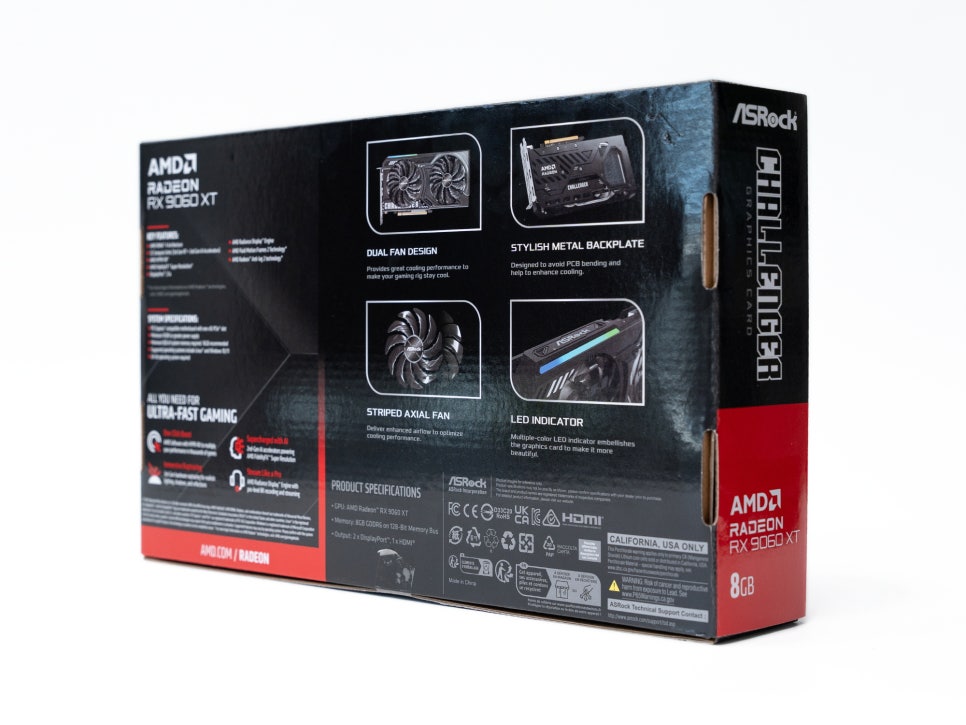
Key specifications are as follows:
Product Specifications
Chipset : RX 9060 XT
Stream Processors : 2,048
Game Clock : 2,700MHz
Boost Clock : 3,290MHz (OC Model)
Memory : 8GB GDDR6
Memory Bus : 128-bit
Memory Clock : 20000MHz
Recommended PSU : 550W or higher
Interface : PCIe 5.0 x16 support
Power Connector : 8-pin x1
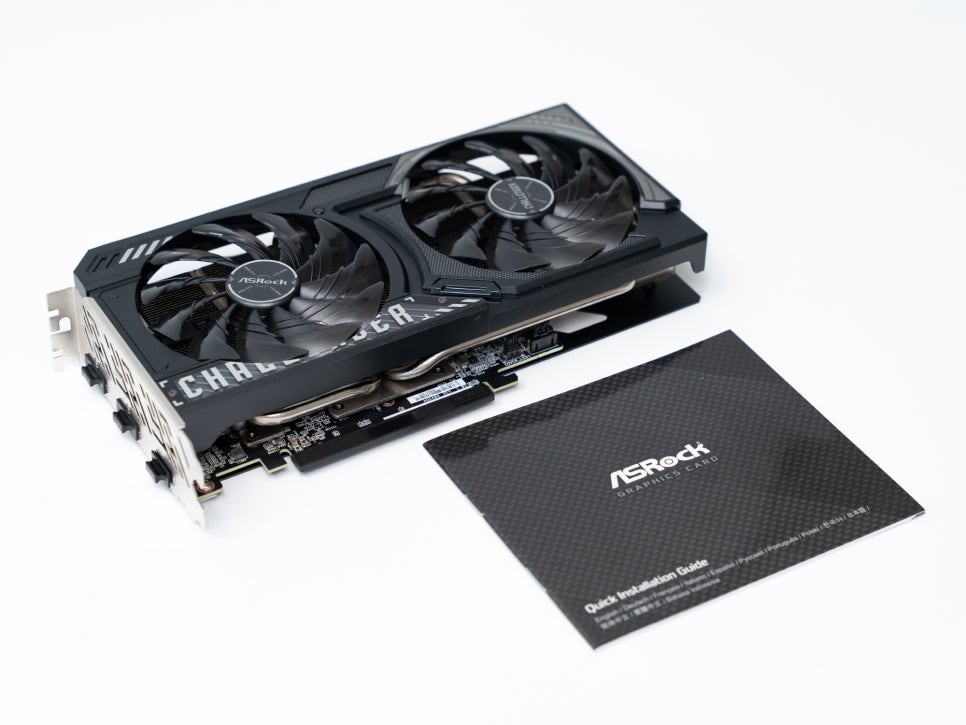
The product package includes the ASRock Radeon RX 9060 XT CHALLENGER OC D6 8GB graphics card and a quick installation guide.
Design and Key Features
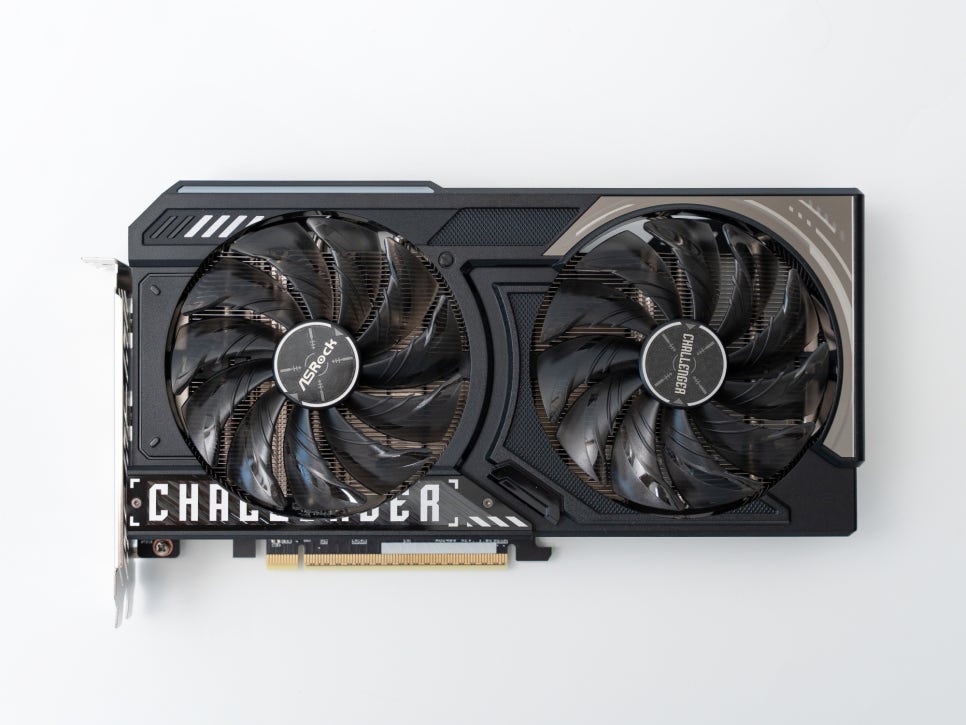
The ASRock Radeon RX 9060 XT CHALLENGER measures 249mm x 131mm x 41mm and occupies a two-slot thickness. It can be installed without issue in most mid-tower cases, as well as smaller cases. The 41mm, two-slot thickness makes it suitable for users planning SFF (Small Form Factor) builds with ITX cases.
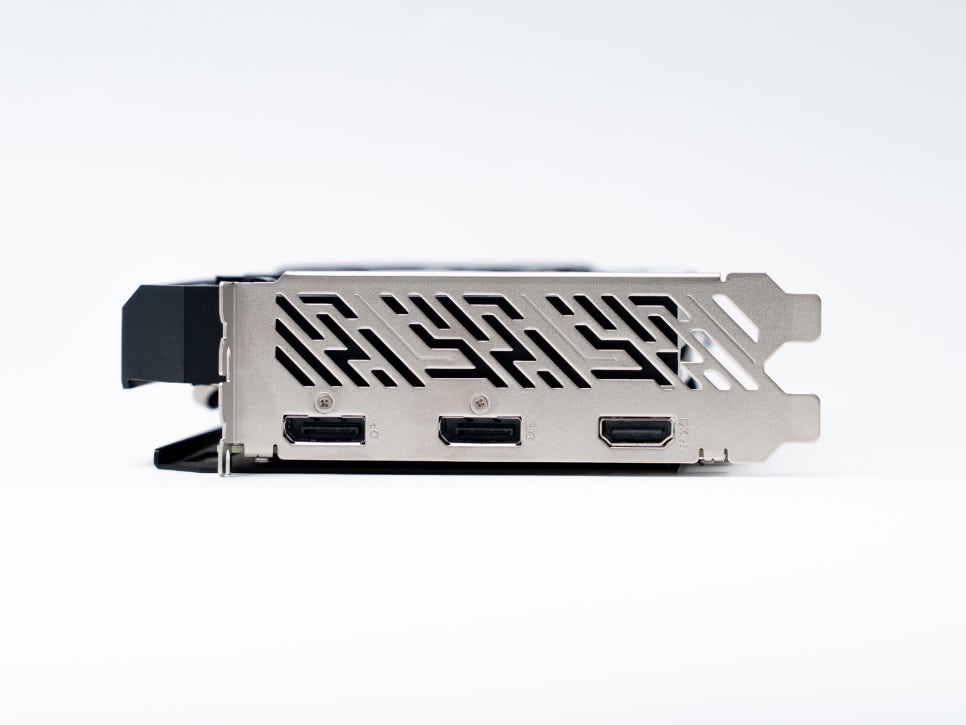
The display output ports fully support the latest standards. It features one HDMI 2.1b port and two DisplayPort 2.1a ports. The HDMI 2.1b port supports 4K 120Hz and 8K 60Hz output, while the DisplayPort 2.1a ports fully support 8K resolution and high refresh rate monitors.
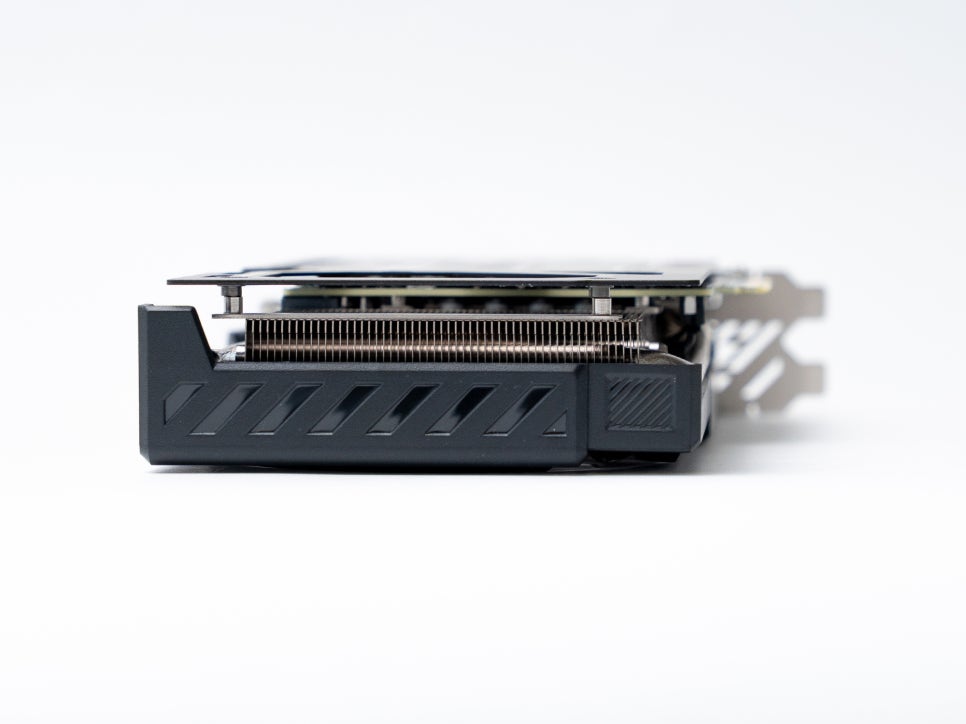

The RX 9060 XT CHALLENGER utilizes a single 8-pin PCIe auxiliary power connector for stable power delivery. Thanks to an optimized power design, stable operation is achieved with just the single 8-pin connector. A 550W power supply is sufficient, making it an attractive upgrade option for existing systems without the need for a PSU replacement.

The cooling system features a twin-fan design. Each fan has 11 blades to optimize airflow and maximize cooling efficiency. Zero-fan technology is also incorporated, completely stopping the fans during low-load situations like web browsing or office work for a silent experience.
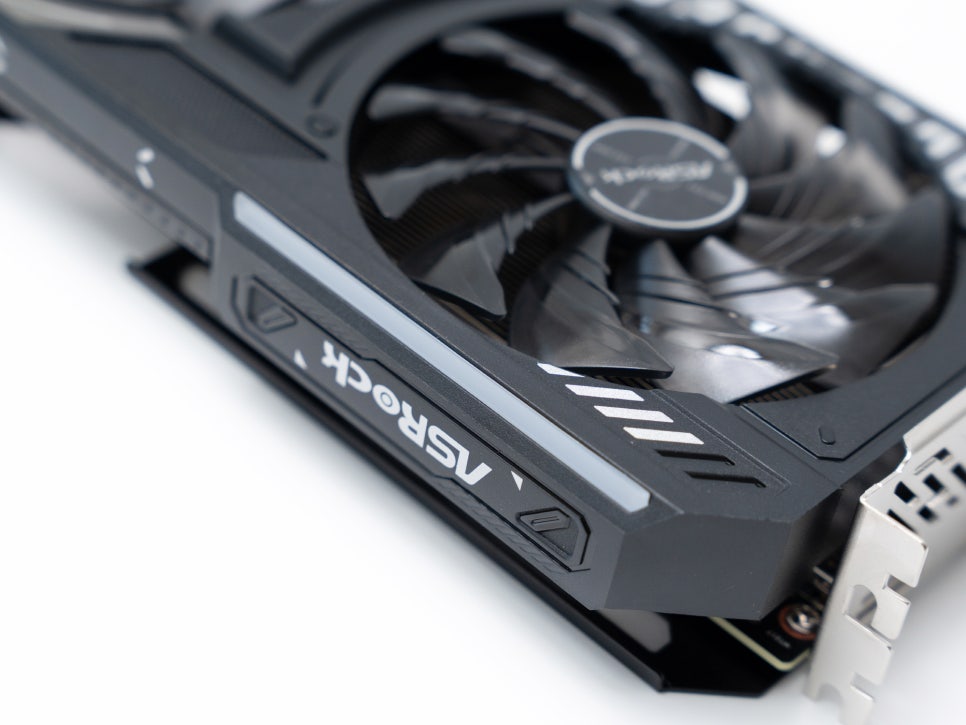
An LED indicator is located on the side, illuminating when power is supplied. The LED can also be turned off via a switch on the backplate.
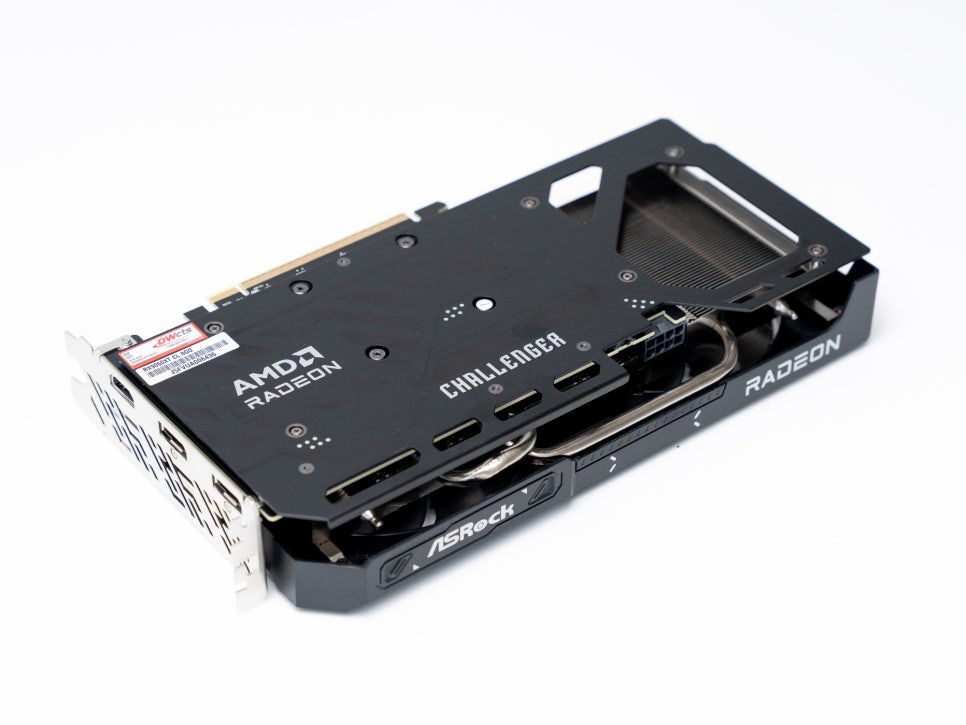
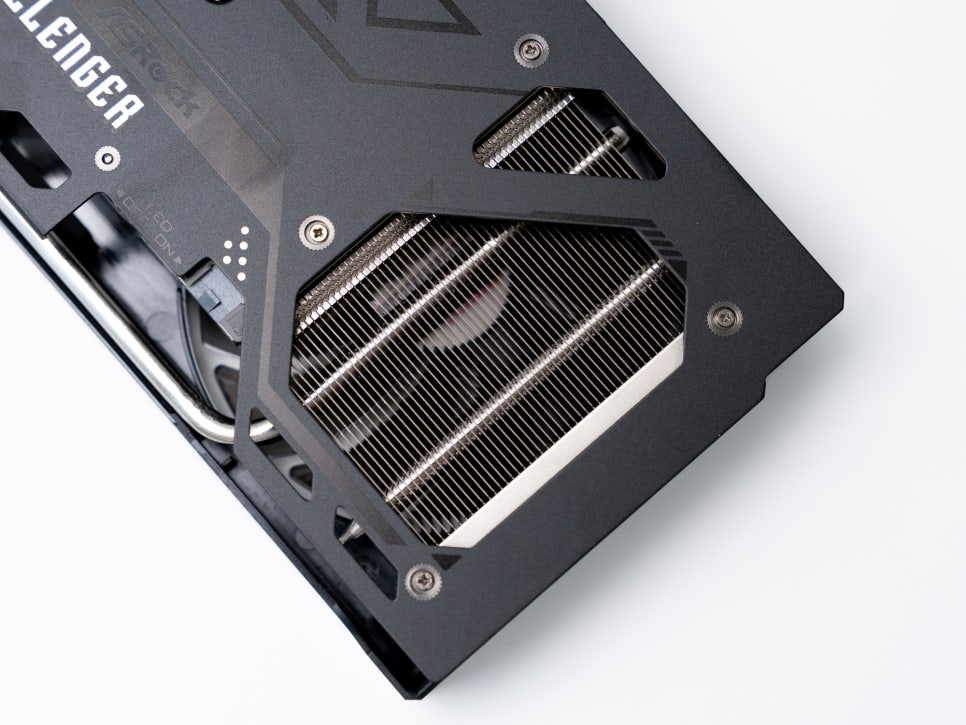
The black backplate features a unique pattern design. Large vents are positioned in areas without PCB components to aid heat dissipation from the heatsink. The aluminum backplate prevents PCB warping and provides additional cooling by dispersing heat from the power delivery components.
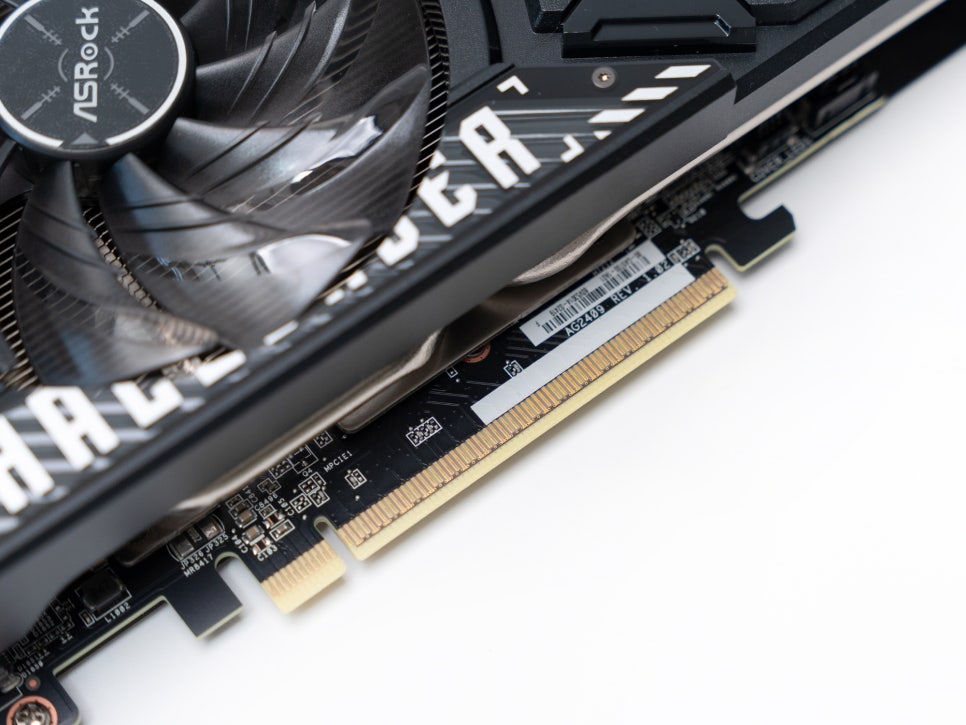
Full support for the PCIe 5.0 x16 interface ensures compatibility with the latest motherboards. AMD has reintroduced the full x16 PCIe configuration for the RX 9060 XT, ensuring backward compatibility with older systems that may not support PCIe 4.0 or 5.0.
System Setup and Performance Testing
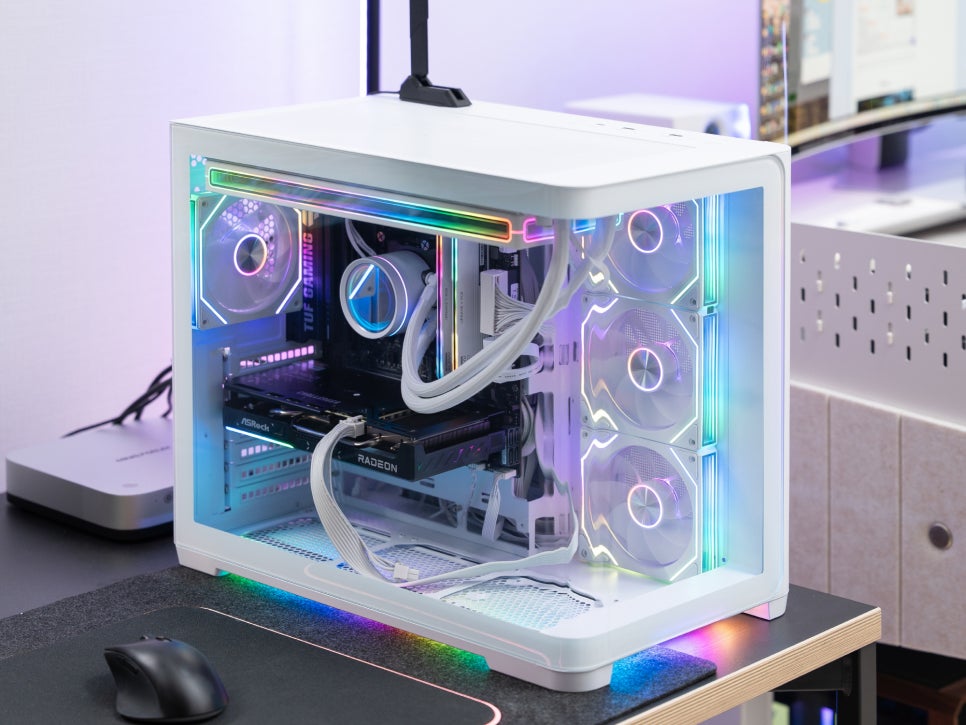

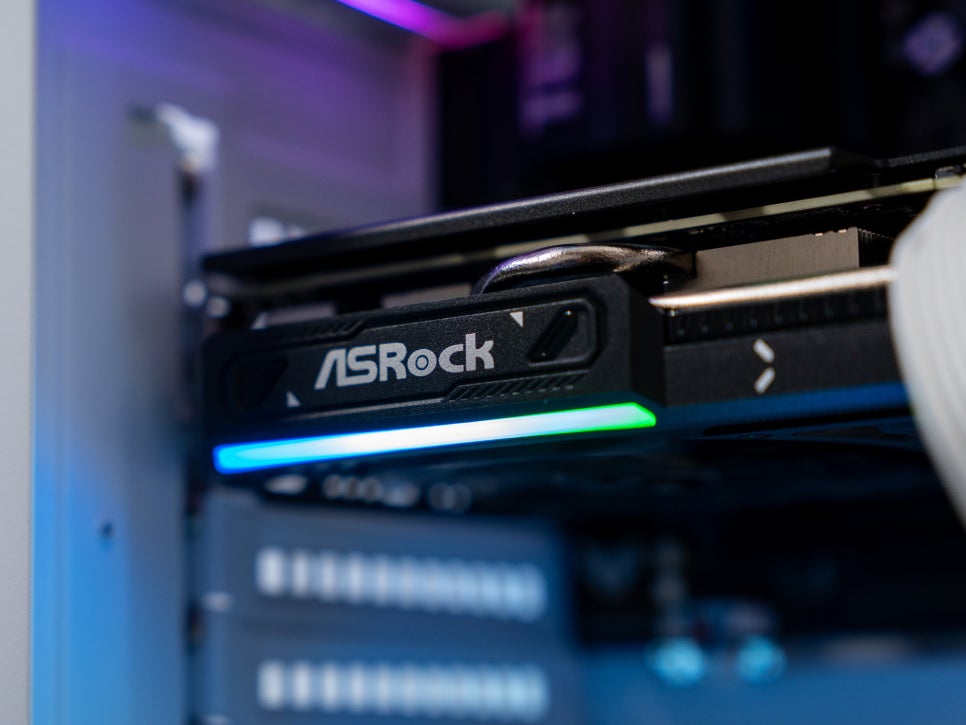
The following test environment was used for performance benchmarking:
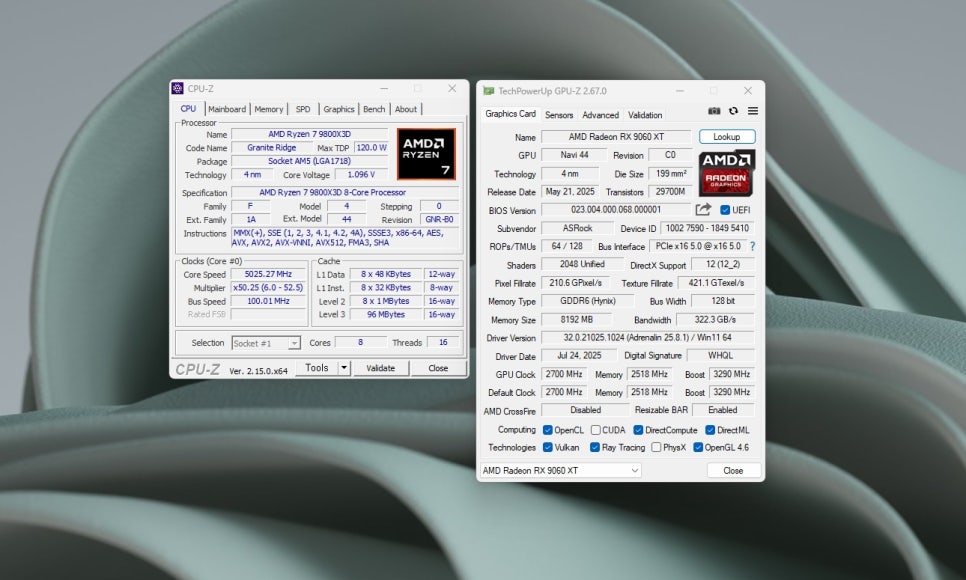
System Specifications
CPU : AMD Ryzen 7 9800X3D
Motherboard : ASUS TUF Gaming B850M-PLUS WIFI DAEWON CTS
Memory : ESSENCORE KLEVV DDR5-6400 CL32D URBANE V RGB 32GB
SSD : Micron Crucial P510 1TB
Operating System : Windows 11 Pro 24H2
3DMark Overall Performance Evaluation

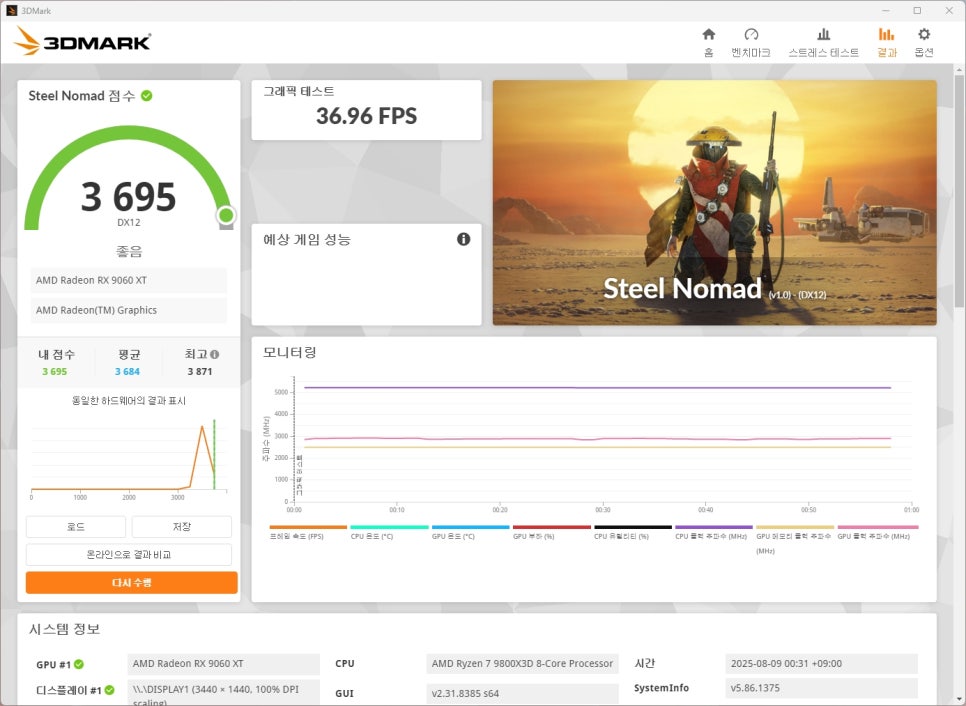
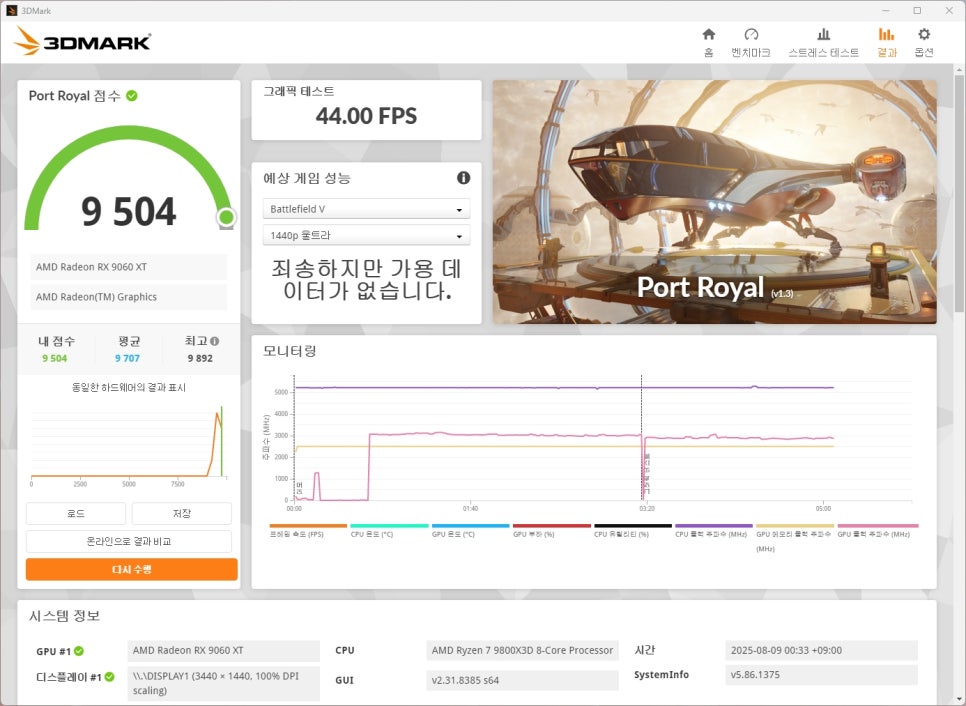

Various graphics performance aspects were comprehensively evaluated using the 3DMark benchmark. Excellent scores were achieved in Steel Nomad and Speed Way. Notably, in Port Royal, the dedicated ray tracing test, a performance improvement of over 1.6 times compared to the previous generation was observed.
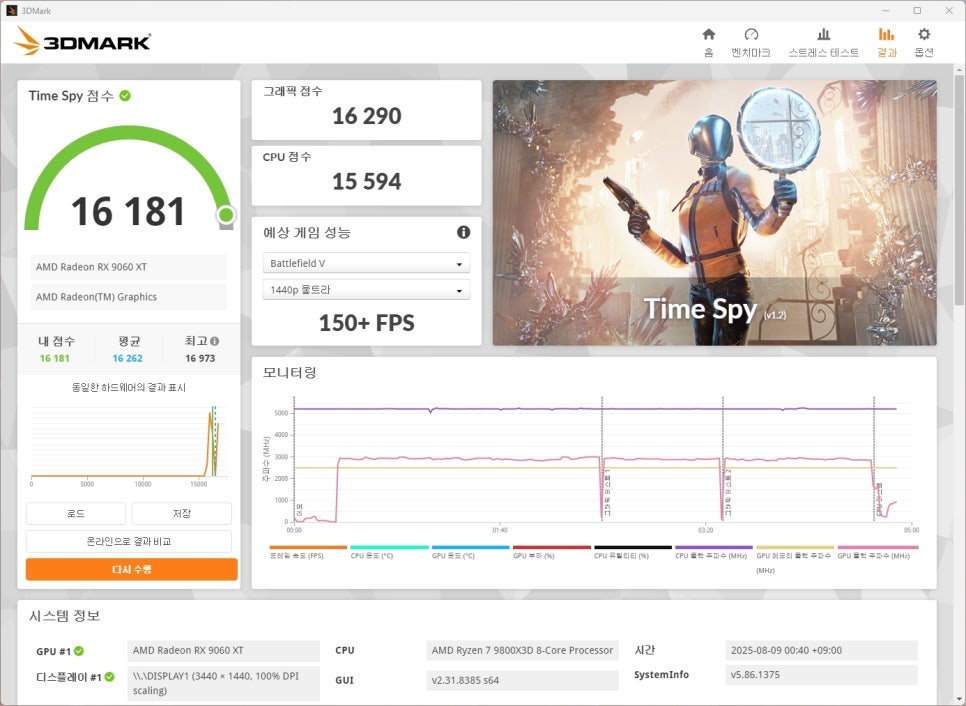
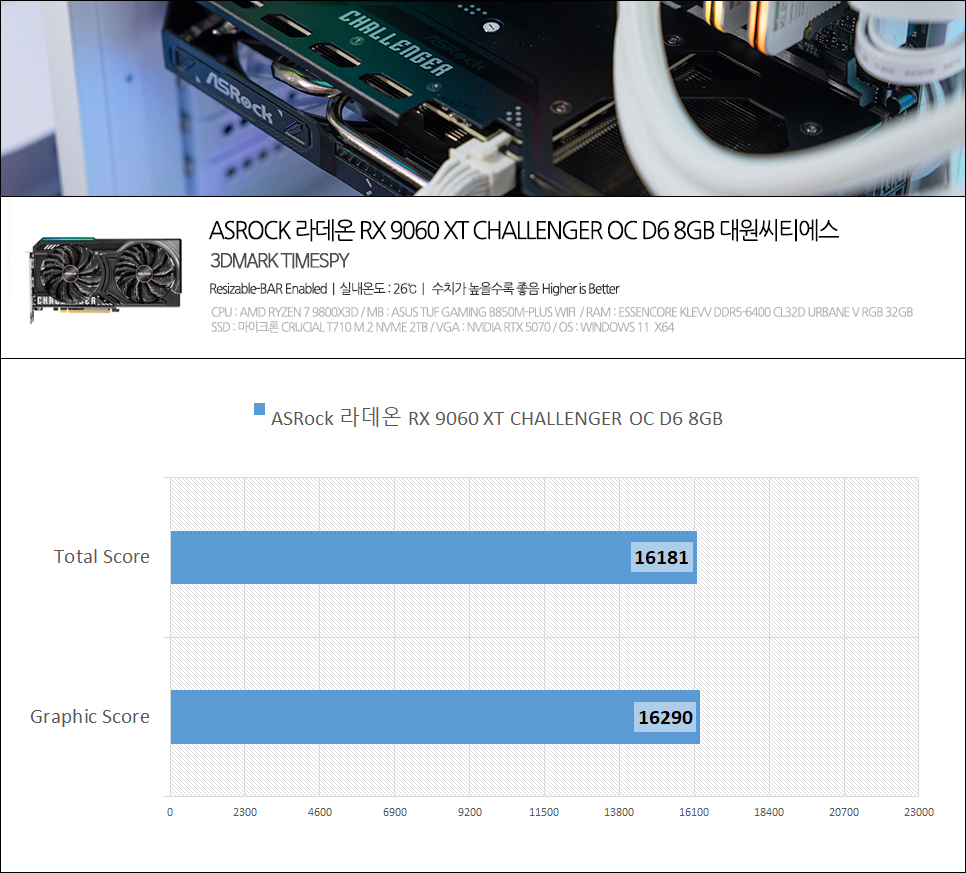
Impressive results were seen in Time Spy, a leading benchmark for evaluating QHD gaming performance. The RX 9060 XT demonstrated up to 1.5 times the processing power of the previous generation RX 7600 XT.
AMD FidelityFX Super Resolution 4 (FSR 4)
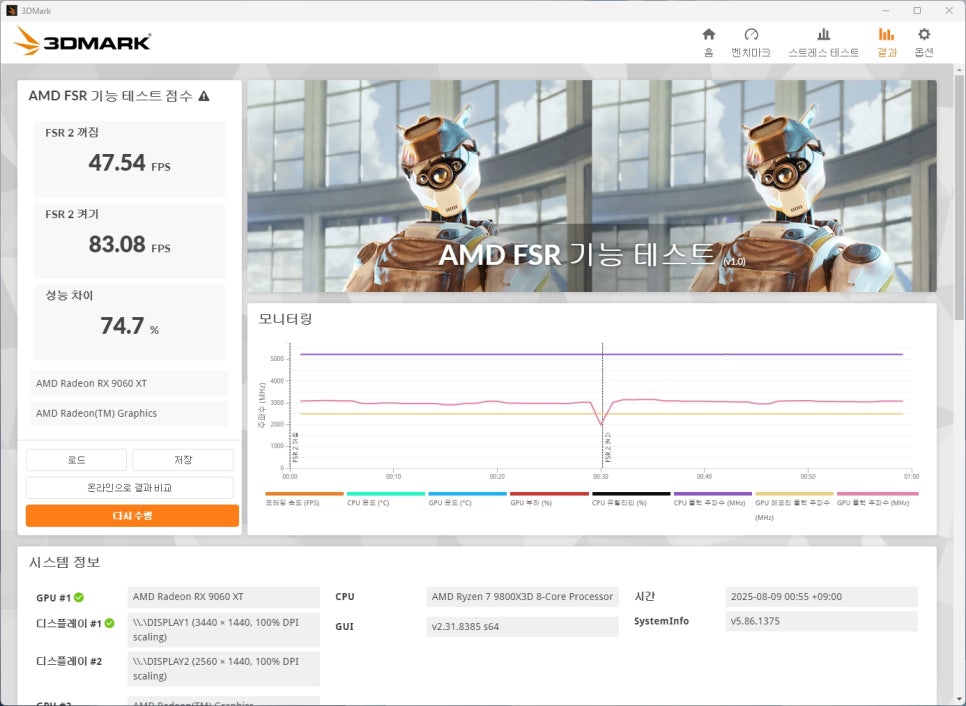
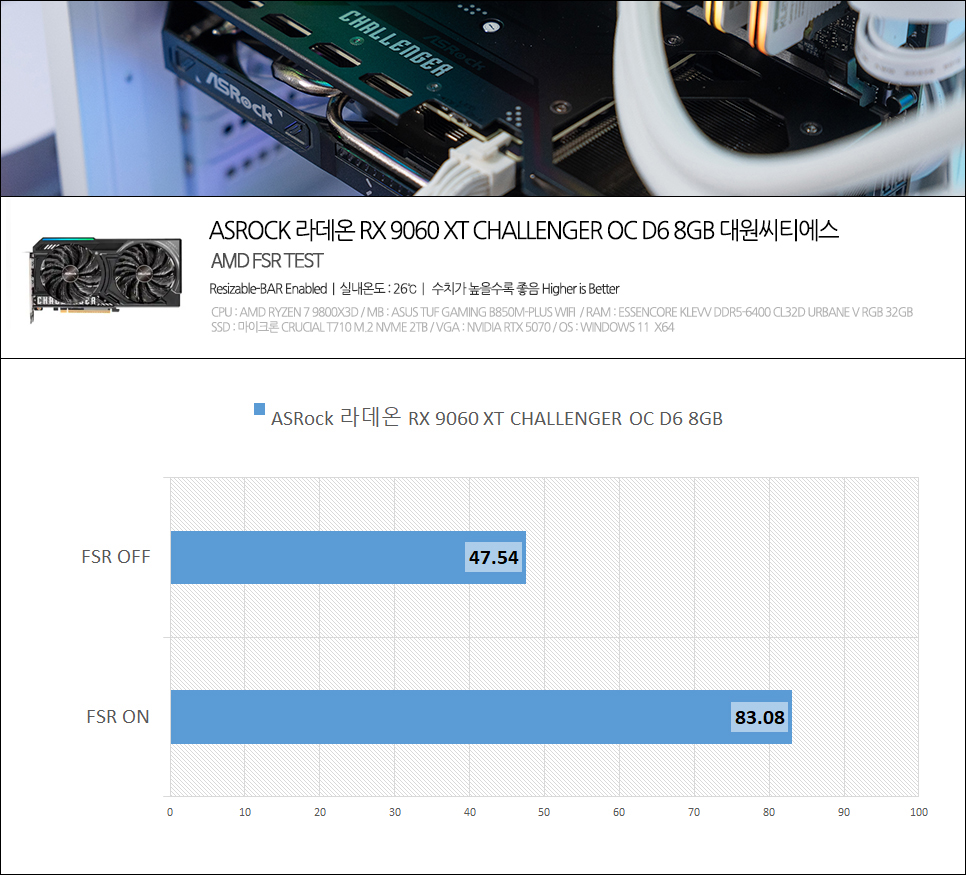
AMD FidelityFX Super Resolution 4 (FSR 4), a core technology of Radeon graphics cards, is an AI-based upscaling technology that promises improved game performance. Next-generation ray tracing and AMD FSR 4-based upscaling enable high frame rates even at high resolutions, allowing for enjoyable gameplay. 3DMark FSR test results showed an average frame rate increase of 74.78% with the feature enabled.
Game Performance Testing
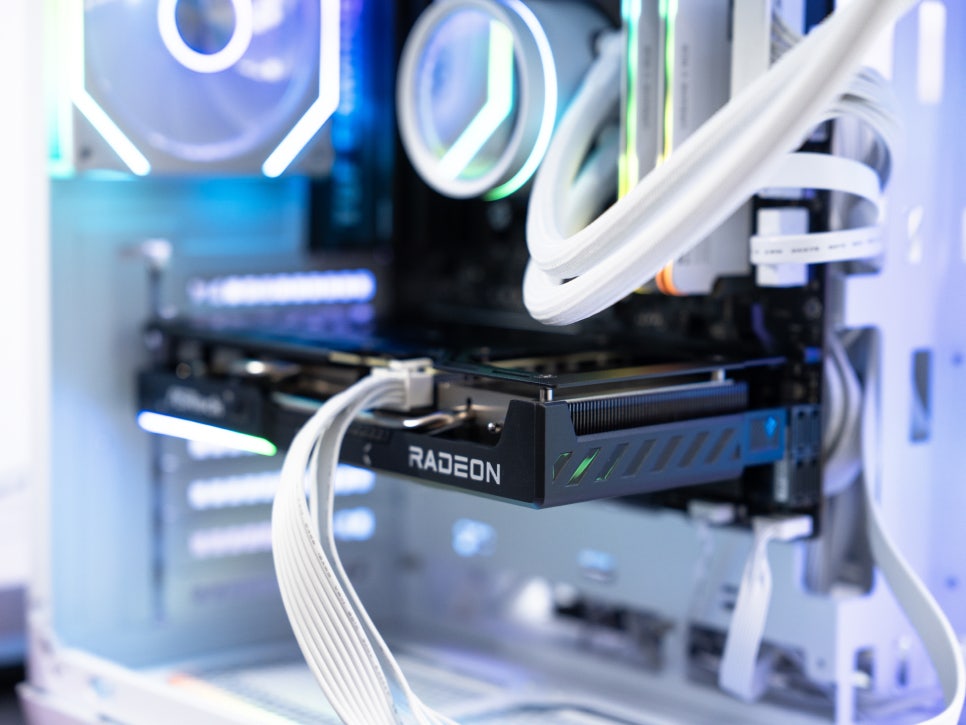
Actual gaming performance was verified across four games at FHD and QHD resolutions, adjusting graphics settings. Even with FSR 4 disabled, smooth gameplay exceeding 60fps was achievable at QHD resolution with medium to ultra settings.
Even when playing at UHD resolution, enabling frame generation technology and adjusting graphics options allows for playing AAA titles at 4K resolution with this mainstream graphics card.
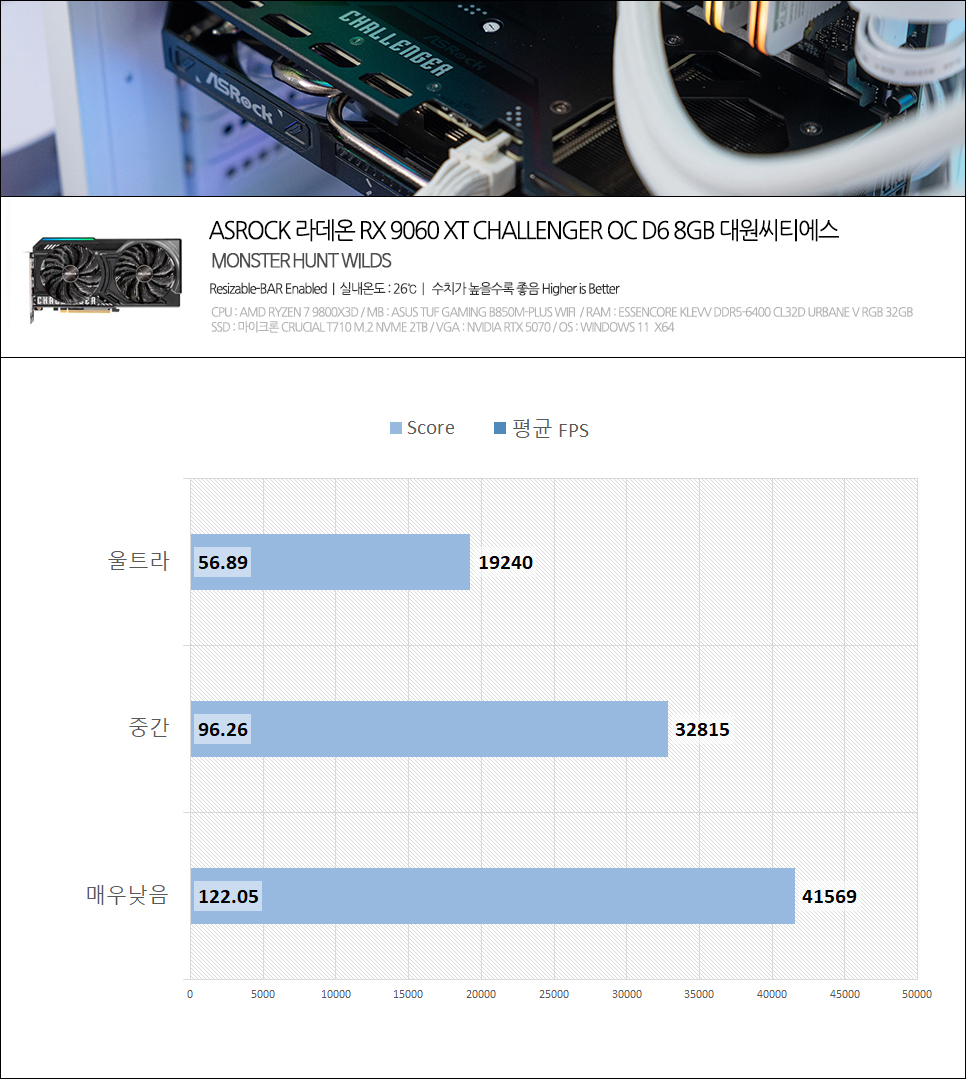
Monster Hunter: World was tested at QHD resolution with three different graphics settings. With ultra settings, 56.89 fps was measured. Activating FSR resulted in an average of 112.49 FPS, a remarkable improvement of more than double the frame rate.
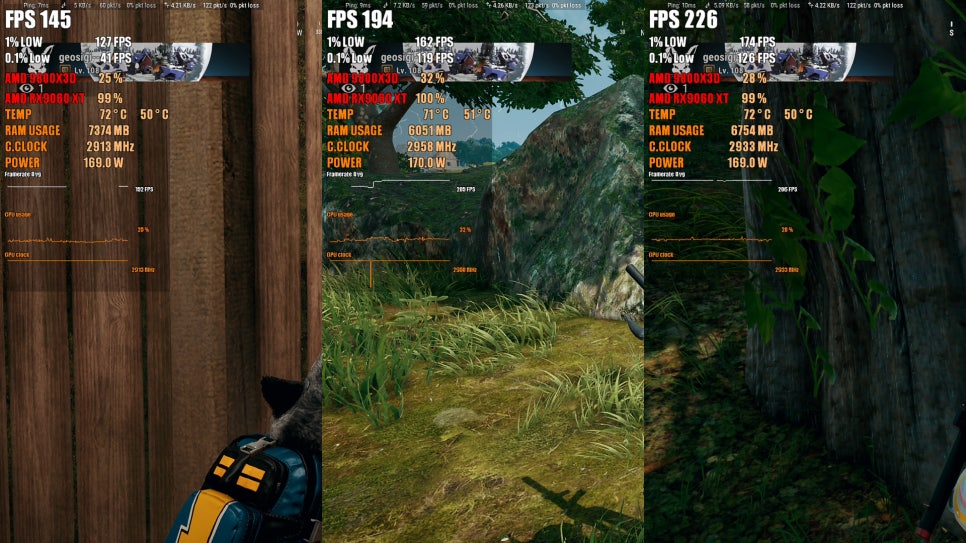
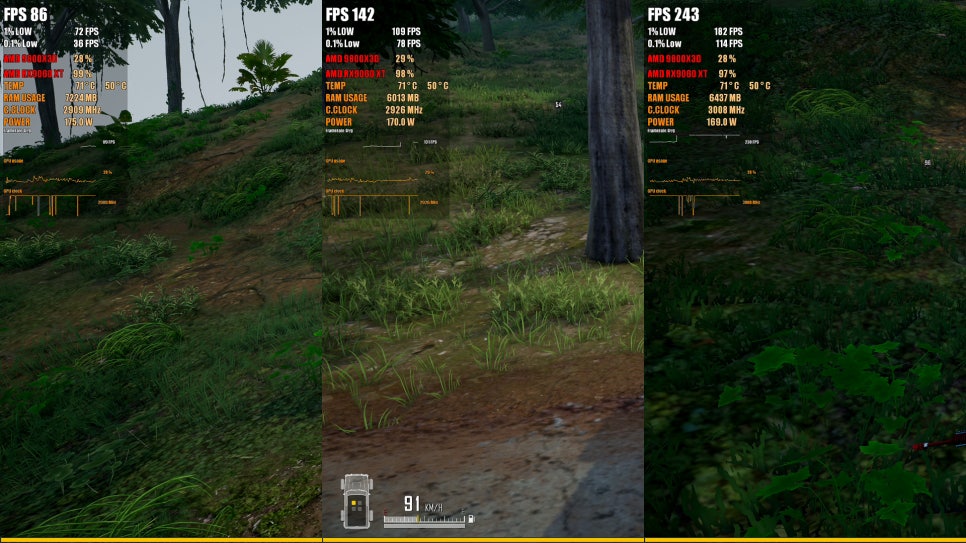
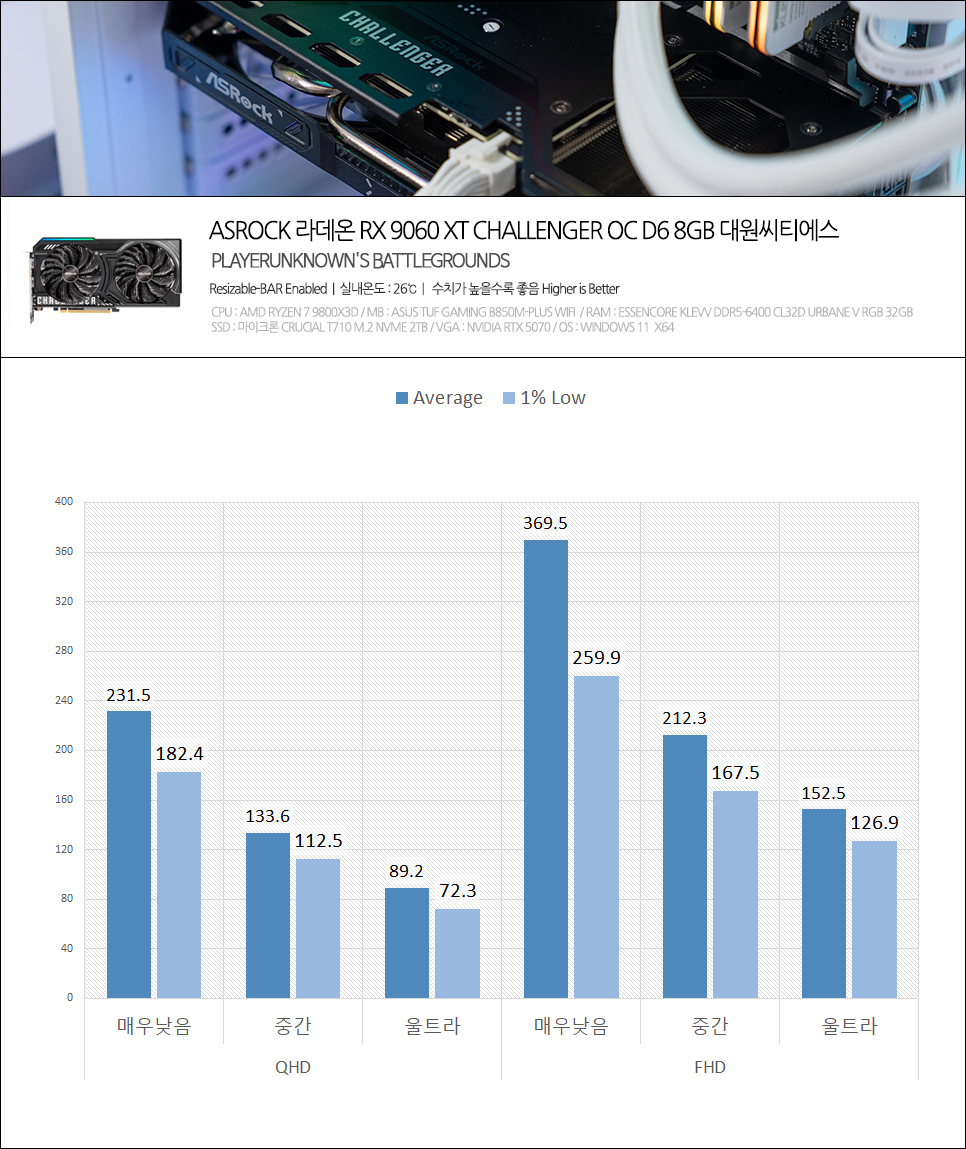
The PUBG test results demonstrate the RX 9060 XT’s excellent performance in both FHD and QHD environments. With appropriate graphics settings adjustments, a smooth gaming experience exceeding 120Hz is attainable at high resolutions. Notably, at QHD, stable 144Hz gameplay is possible with only minor adjustments to ultra settings.
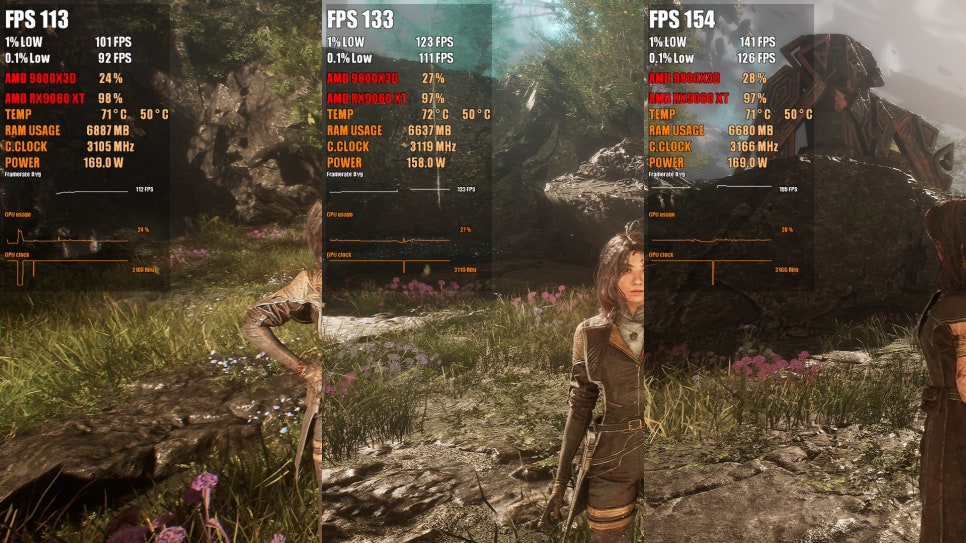
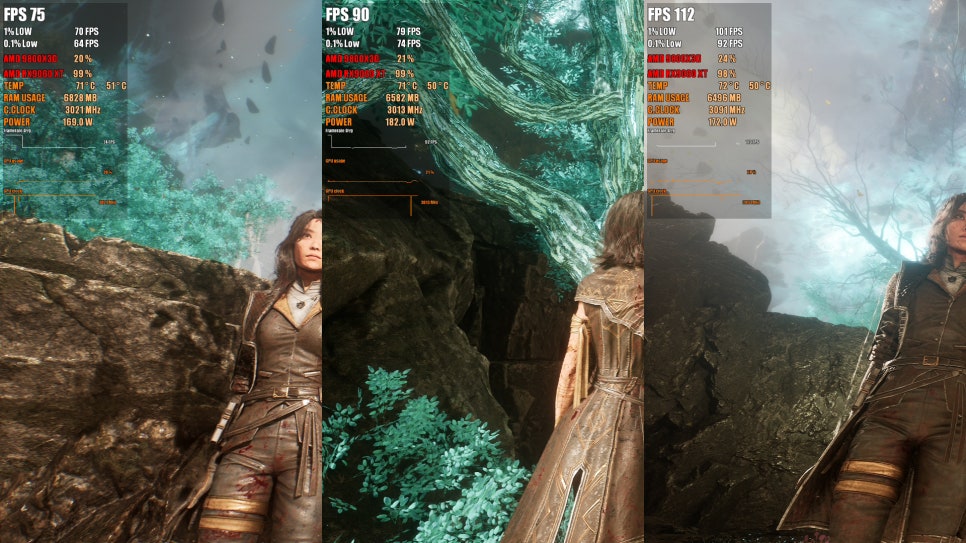
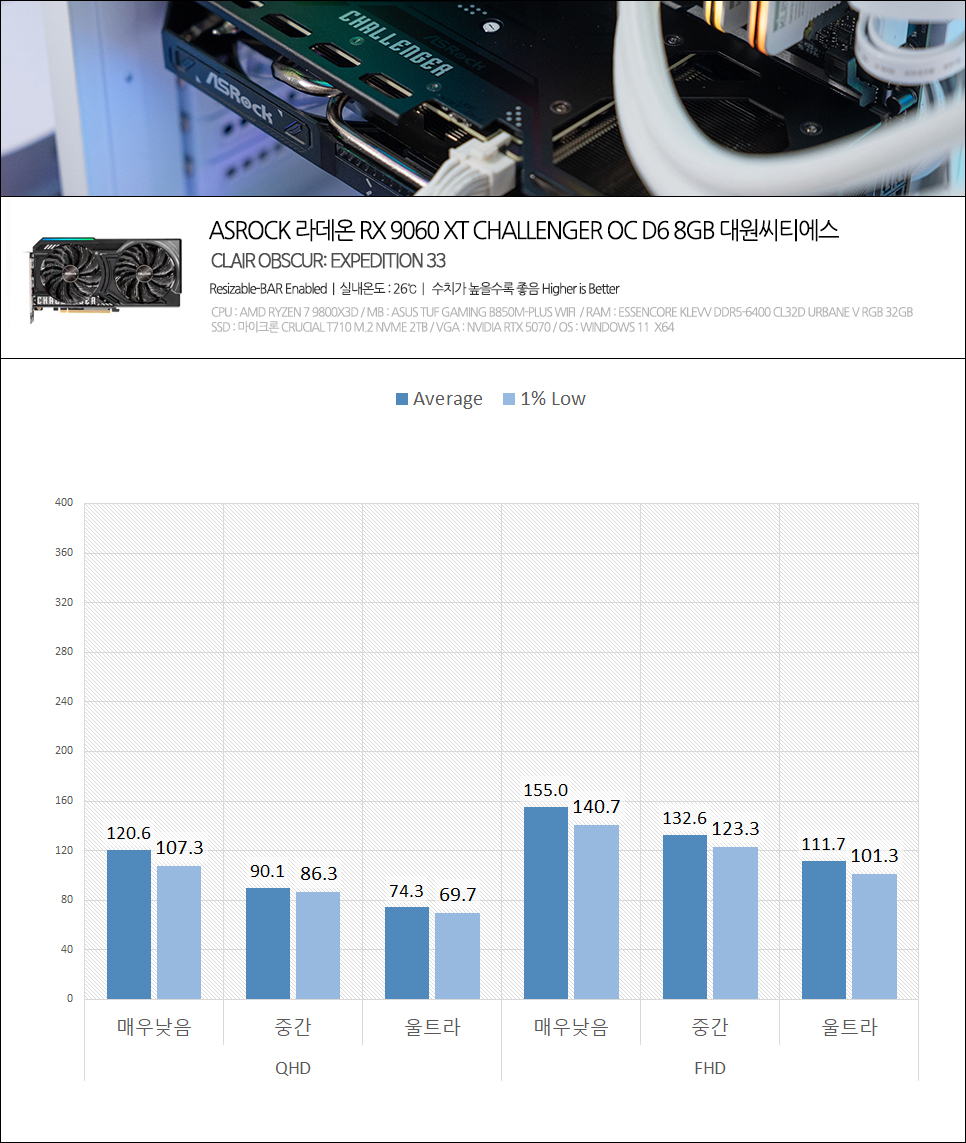
For demanding games like Lost Ark, which doesn’t yet support FSR, some compromise on settings might be necessary even at QHD resolution. However, given the turn-based nature of the game, 60 FPS or more is sufficient for enjoyable gameplay. FSR support is highly anticipated.
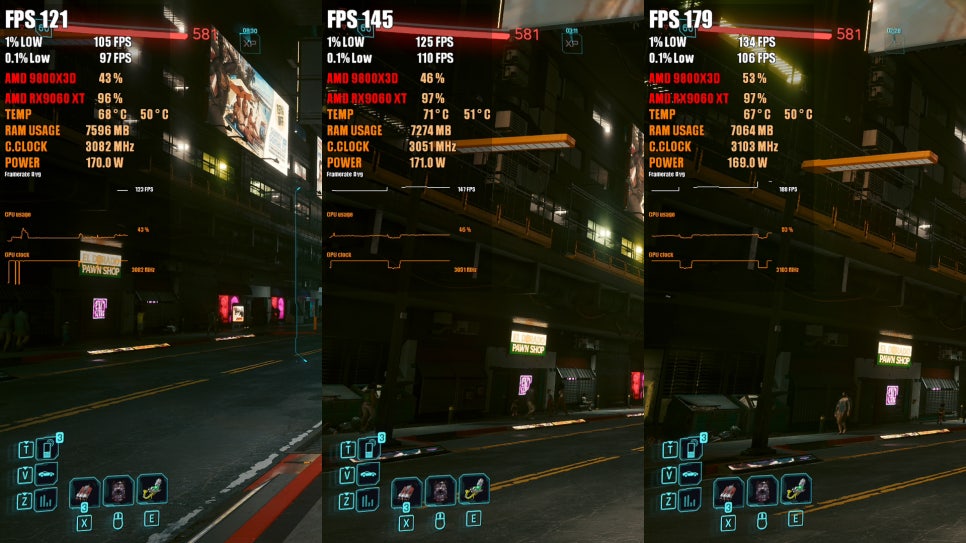
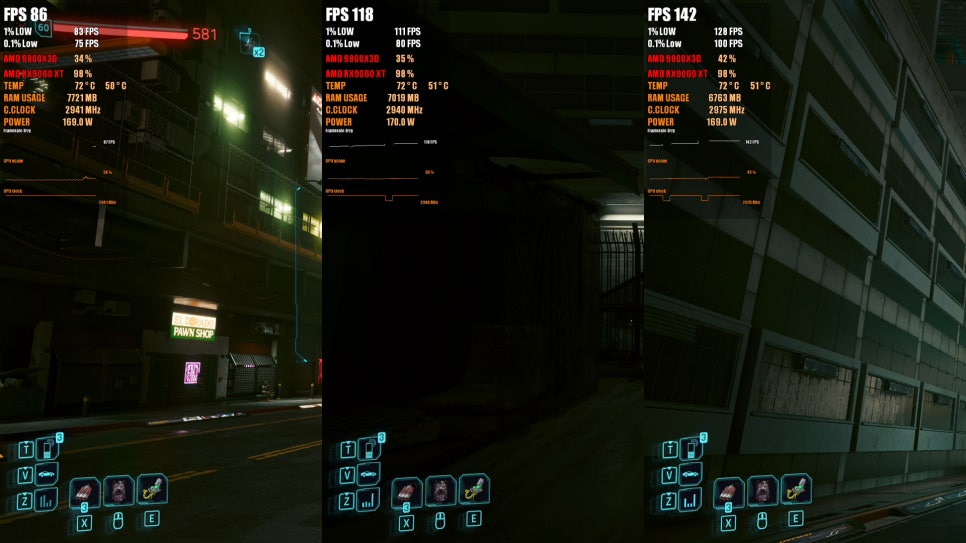

In Cyberpunk 2077: Phantom Liberty testing, the RX 9060 XT delivered very smooth and comfortable frame rates at FHD resolution. At QHD, with appropriate graphics settings adjustments, the card provided sufficient performance for enjoyable gameplay on high refresh rate monitors. Utilizing upscaling technologies like FSR, especially when adjusting ray tracing settings, should enable stable frame rates even in complex urban environments or intense combat scenes.
Software
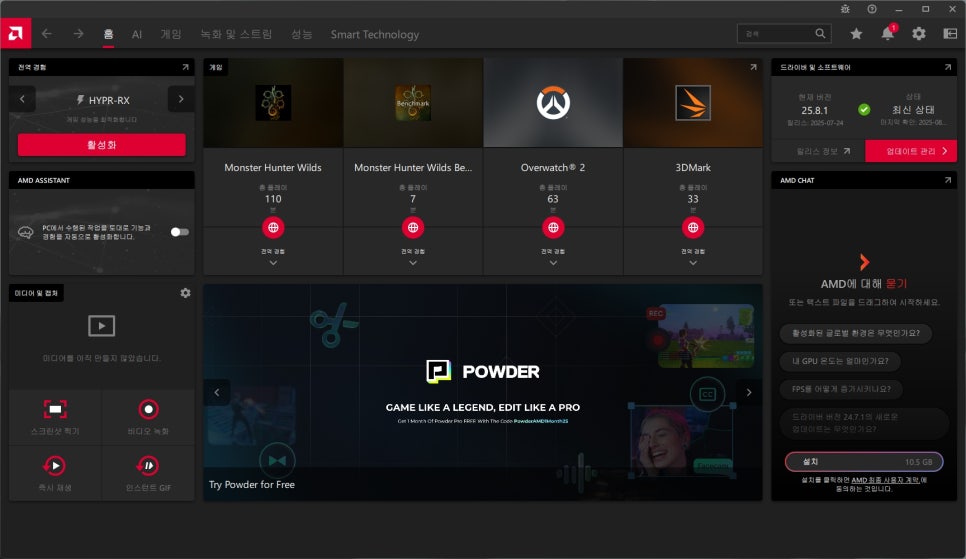
AMD Radeon Software is the official software supporting AMD Radeon graphics cards. It offers performance optimization, graphics settings configuration, driver management, and AI-powered features. It allows for enhanced graphics performance, driver and setting management, AI and power control, and even game recording and live streaming through its recording and streaming functionality.
Concluding the Review
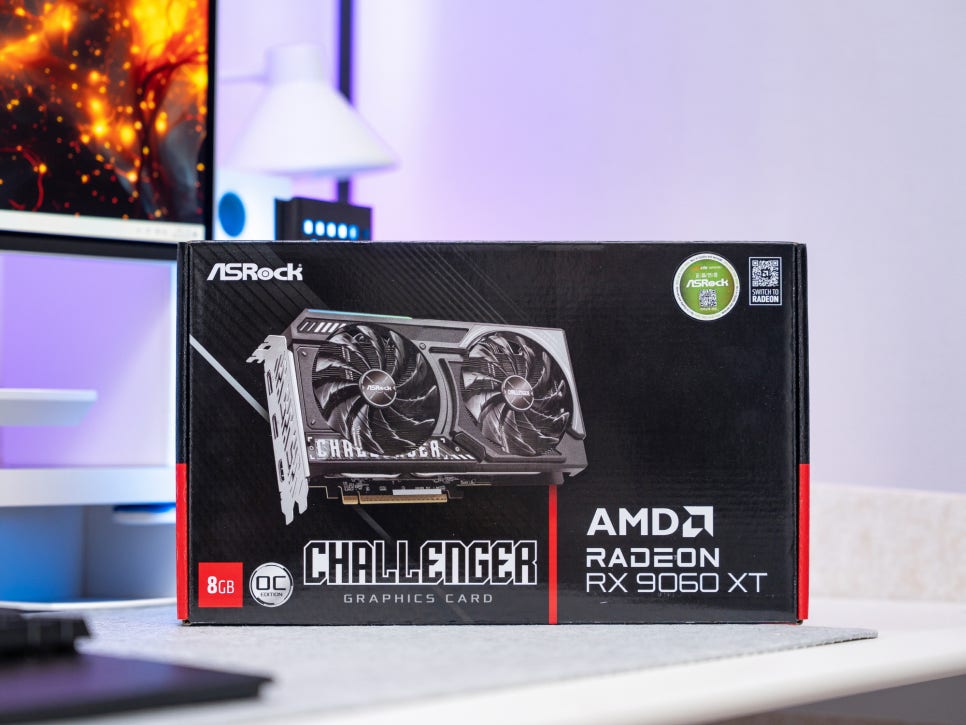
The ASRock Radeon RX 9060 XT CHALLENGER OC D6 8GB DAEWON CTS offers excellent value in the mid-range graphics card market. Its accessible price point in the mid-400,000 won range, performance capable of QHD gaming and entry-level 4K, combined with a low 170W power consumption, significantly reduces the cost burden of upgrading existing systems.
The clean design of the CHALLENGER series blends seamlessly with any system, and its relatively short length of 249mm offers significant advantages in case compatibility.
Finally, DAEWON CTS’s reliable after-sales service is another strength of this product. As the official domestic distributor, DAEWON CTS provides prompt and accurate technical support based on their extensive experience and expertise.
This concludes our performance test of the ASRock Radeon RX 9060 XT CHALLENGER OC D6 8GB.
As an Amazon Associate I earn from qualifying purchases.
Purchase Product : https://amzn.to/45fTEo7

